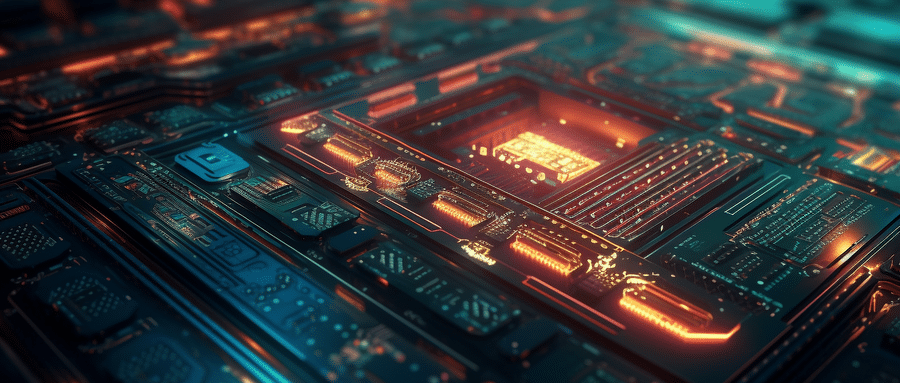Understanding PCB Substrates: Types, Properties, and Applications
Substrates for Reliable Circuit Boards
PCB substrates serve as the basis of electronic circuitry, supporting and interconnecting various electronic components while also offering electrical insulation and mechanical stability. Here, we explore various types of PCB substrates available and their properties pertaining to printed circuit board manufacturing.
Types of PCB Substrates:
- Flame Retardant-4 (FR-4) is one of the most widely-used PCB substrate materials, composed of woven fiberglass impregnated with epoxy resin and providing an ideal balance of electrical insulation, mechanical strength and cost-effectiveness for general-purpose PCBs. FR-4’s versatility extends from consumer electronics to industrial equipment applications.
- High-Temperature FR-4 Substrates:These high-temperature FR-4 substrates are specifically engineered to withstand elevated temperatures, featuring special polymer additives or reinforcements designed to enhance thermal performance and increase their stability at higher temperatures. Common applications for these substrates include automotive electronics or industrial control systems where extreme conditions exist.
- Metal Core PCB (MCPCB):These boards consist of an aluminum or copper layer sandwiched between two layers of dielectric material to act as an effective heat spreader, dissipating heat efficiently from power components. They’re widely used for applications requiring efficient thermal management such as LED lighting, power supplies, and automotive electronics.
- Ceramic Substrates: Ceramic substrates provide outstanding thermal conductivity and electrical insulation properties, typically manufactured from materials like Al2O3 or AlN. Ceramics have applications in high power electronics, RF/microwave circuits and high frequency applications due to their superior heat dissipation capabilities and reduced signal loss characteristics.
Properties of PCB Substrates:
1. Electrical Insulation:
One of the primary functions of PCB substrates is electrical insulation between its layers. Dielectric properties like dielectric constant and dissipation factor have an impactful on signal integrity and electrical performance – low dielectric constant substrates should be preferred for applications involving high frequency signals in order to minimize signal loss while still upholding signal integrity.
2. Mechanical Strength:
PCB substrates should possess enough mechanical strength to support components while withstanding mechanical stresses during fabrication, assembly, and operation. High tensile and flexural strengths provide greater reliability and longevity of operation for the circuit board.
3. Thermal Conductivity:
In high-temperature applications like power electronics and high-temperature environments, dissipating heat quickly is of vital importance. Substrates with high thermal conductivity efficiently dissipate it away from heat-generating components to protect them and maintain peak performance levels.
4. Thermal Expansion:
To mitigate stress-induced failures and protect solder joints against thermal cycling damage, CTE of substrate materials plays an essential role. Matched CTE profiles between them reduce the likelihood of solder joint fractures due to thermal cycling.
Applications of PCB Substrates:
1. Consumer Electronics:
PCB substrates have become an integral component in consumer electronics devices like smartphones, laptops, televisions and gaming consoles.
2. Industrial Electronics:
Electronic control systems, robotics, automation equipment and instrumentation depend heavily on PCB substrates for reliable operation in harsh industrial environments.
3. Automotive and Aerospace:
PCB substrates have become an essential component in automotive electronics and aerospace applications that rely heavily on reliability, durability and high temperature performance.
4. LED Lighting:
Metal Core PCBs (MCPCBs) are widely utilized for LED lighting applications, providing efficient heat dissipation and prolonging their lifespan.

PCB substrates are essential components in creating reliable and high-performing circuit boards, with consideration given to factors like electrical insulation, mechanical strength, thermal management and cost-effectiveness when selecting their material of choice. Understanding various substrate types allows engineers to design circuit boards which meet the stringent demands of modern electronic systems.
FAQ:
- What is a PCB Substrate?
A PCB substrate is the base material of a PCB, which supports the electrical components and conducts the electric current between these components. It provides the physical and electrical connection for the circuit to function correctly. - What materials are commonly used as PCB substrates?
The most commonly used material for PCB substrates is FR4 (flame retardant 4), a type of glass-reinforced epoxy laminate material. Other materials may include polyimide, aluminum, and Teflon, depending on specific requirements. - How is the PCB substrate chosen?
The selection of a PCB substrate often depends on the specific requirements of the PCB, such as thermal conductivity, dielectric constant, flexibility, cost, and environmental factors. - What are the properties of an FR4 substrate?
FR4 substrates are known for their excellent mechanical strength, good resilience to temperature, fair electrical insulation, and cost-effectiveness. These properties make it a popular choice in general-purpose applications. - How do substrates play a role in the thermal management of a PCB?
The substrate’s thermal properties are crucial for the thermal management of a PCB. Materials like aluminum have higher thermal conductivity and can quickly dissipate heat, preventing any damage due to overheating. - What makes a PCB substrate suitable for high-frequency applications?
For high-frequency applications, substrates require a low dielectric constant and low signal loss. This ensures the signal integrity is maintained. Materials like Rogers and Teflon are often used for these applications. - What is a flexible substrate?
A flexible substrate, often made from materials like polyimide, allows the PCB to bend or fold according to the design requirements. This is particularly useful in applications where space is a constraint. - What factors affect the dielectric constant of the substrate?
The dielectric constant of a substrate can be affected by several factors, such as the composition of the material, the frequency of the operation, and the temperature conditions. - What role does the substrate play in the PCB fabrication process?
In the PCB fabrication process, the substrate acts as the foundation upon which the copper layers and other components are built onto. - Can the substrate influence the performance of the PCB?
Yes, the substrate’s properties such as dielectric constant, thermal conductivity, mechanical strength, and more, can significantly impact the overall performance and reliability of the PCB. So choosing the right substrate considering the application is of utmost importance.























